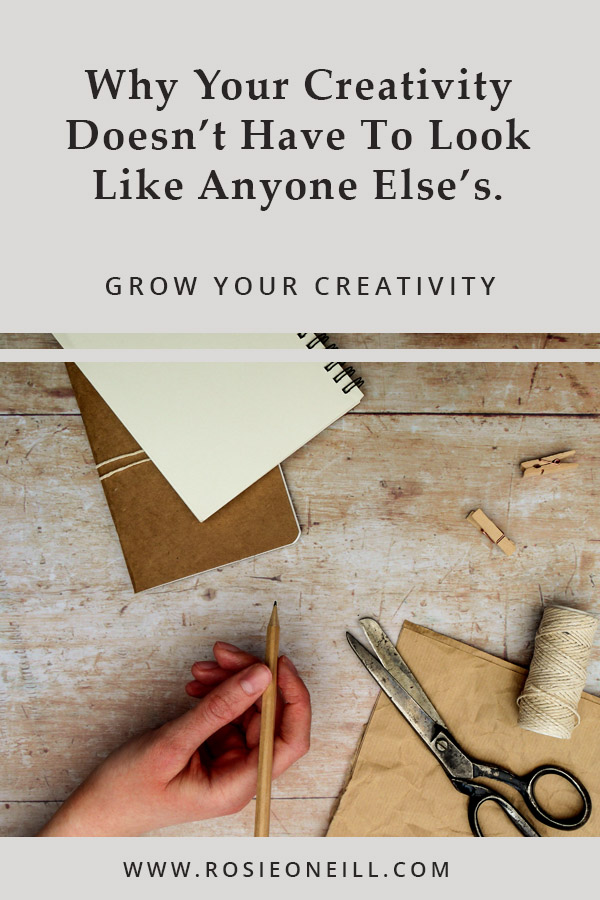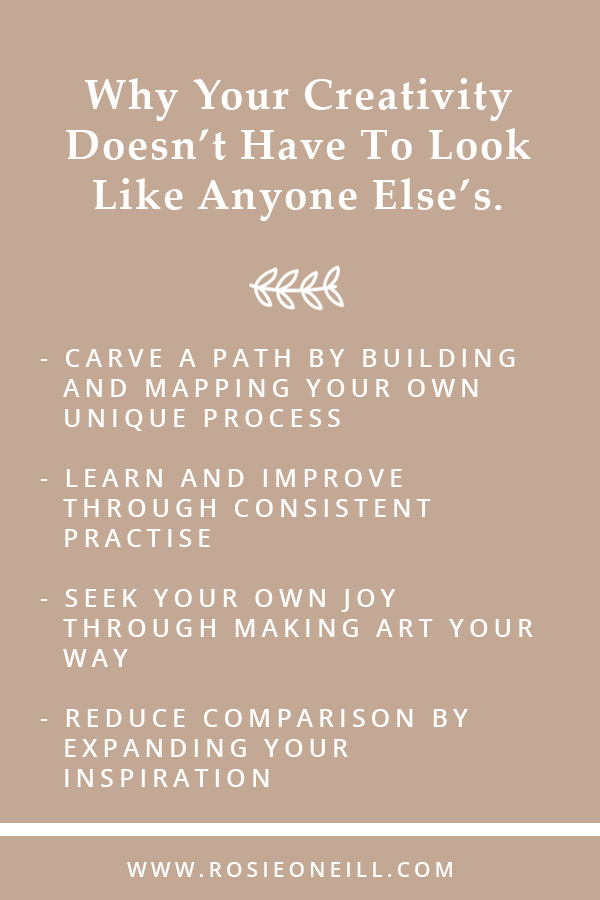WHY YOUR CREATIVITY DOESN'T HAVE TO LOOK LIKE ANYONE ELSE'S.
I didn't start writing fiction until I was twenty two. In fact, I hated creative writing throughout school (vastly preferring the literature of others to anything I could create) - but this doesn't make me any less of a writer now.
Looking back, I can recognise my dislike of creative writing then for what it really was - the fear of others (even a teacher!) reading something deeply personal to me.
Now though, I sometimes wonder at my lack of formal education in writing in the same way I used to criticise everything I drew because no one had ever taught me the right or wrong way to do it (there is no such thing).
I think it's something that plagues a lot of us, this type of self-doubt. We are quick to deem ourselves unworthy of value or expertise. Slow to recognise that simply by doing the thing, we have become it. If we write we can call ourselves a writer. If we make art we can ourselves an artist.
That you went to art school, know the correct way to apply oil paint or the traditional way to structure a story bears little relevance. These things can help shorten the learning process, certainly, but there is something to be said for figuring things out yourself, for putting in the solid work it takes to become proficient at a craft.
Your creativity doesn't have to look the same as anyone else's. And if you need reminding of this from time to time? Read my tips below:
Map your own process.
Learn to trust your own unique process by recording it's various patterns and rhythms. Using journaling as a way of learning about yourself and the way you create can help you feel less alone and more at peace with the uniqueness of your process.
Recording your dreams and goals, setting intentional actions to help you achieve them, and reflecting on the success of these is a good place to start uncovering this creative process for yourself. Along the way you'll expose the various stumbling blocks to your creativity you typically hit, and be able to record what helped and what didn't - making a map of your process. If you'd like some specific prompts and tips in this area, you can download my free workbook, Nurture and Flourish, HERE.
Learning.
Turn the focus from external comparison by welcoming your own internal growth through regular, consistent practise of your art. Whatever it is you create, it's this sustained output which will put you on the path to expertise, far beyond what any degree could teach you, and more surely than any natural born talent could lend you.
Seek the joy.
One of the best remedies for self-doubt is to dig in deep to your joy and purpose. While it's not always possible to love making art all of the time (and we shouldn't feel guilty about that), letting your passion take the wheel is a great way to keep comparison at bay and let yourself trust in the way you do things.
Expand your sources of inspiration.
If you are ever left feeling that you're making your art in the wrong way, consider widening your window of inspiration. Look to people who create in different ways, in different mediums, with different tools. People who live differently, create with different boundaries and constraints. The more varied your outside influence, the more you'll see that we are all different, and in that we are the same.
And above all of that, know this:
It's okay to create in your own way, in your own time, and with your own methods.
Your speed does not define your art. Your tools do not define your art. Your education does not define your art.
Your process is uniquely personal, and it follows then, that it's entirely up to you to define. Not only that, but to change and grow and develop in whatever way you see fit.
Keep creating, in whatever way you need to.
PIN FOR LATER:




